Sharp, shooting back pain? Numb legs? Tingling feet? It could be sciatica. Sciatic pain affects more than 3 million people in the U.S. each year. Here’s what to do about it.
Sciatica is a condition characterized by pain in the lower back, leg, and hip due to compression on the sciatic nerve. The sciatic nerve is the largest and longest spinal nerve in the human body. It runs from the lower back down the back of each leg. Its role is to transmit nerve signals between the muscles and skin of the legs and feet (which is basically a fancy way of explaining how the cells communicate with each other). Pain occurs when something injures, or puts pressure on, the sciatic nerve.
Sciatica is often confused with other ailments, and it’s important to realize that the term actually describes the symptom of nerve compression (i.e., pain), and is not actually the problem itself.
Suffering from a sore neck, back and shoulders? Get our mobility guide to ease pain and soreness.
Get The FREE Mobility Guide To Fix Your Pain Today!
Do You Have Sciatica?

However, not everyone who experiences sciatic-like pain is actually suffering from true sciatica. General back pain and piriformis syndrome can also display similar symptoms. Let’s take a look at the differences.
True sciatica: compression of the sciatic nerve at the base of the spine (usually as the result of a herniated disc or bone spur) is the specific cause of true sciatica. This compression causes a radiating pain that affects the lower back, hip, and outer leg. True sciatica is often diagnosed by the “straight leg raising test,” where a patient lying on their back lifts a straight leg between 30º and 70º. This movement stretches the sciatic nerve and, if no pain occurs, is useful in ruling out the diagnosis of disc herniation. (1)
Piriformis syndrome: is also characterized by pain in the sciatic nerve, but it is not true sciatica because it is not caused by issues related to spinal compression. Instead, the sciatic nerve is being compressed by spasms of the piriformis muscle – a small muscle located at the side of the buttocks, running from the base of the spine to the top of the thigh bone and directly across the sciatic nerve. Piriformis syndrome can be hard to identify and is often diagnosed only when true sciatica is ruled out as a cause.
General back pain: will affect up to 85% of Americans at some point during their lives. However, general pain in the back is often not caused by sciatica. In many instances, back pain is caused by overextending or straining the back muscles through exercise, moving heavy objects, or incorrect posture.
Sciatica Symptoms

- Mild or severe radiating pain down the leg and into the foot
- Sharp, shooting pains in the side of the hip, the outer thigh, the calf and/or foot
- Numbness in the lower extremities
- Pins and needles in the legs and/or feet
- A burning sensation in the lower body
- Muscle weakness in the affected leg
- Lower back pain (a minor symptom, not nearly as acute as those in the legs and feet)
Common Causes of Sciatica
Herniated Disc: The most common cause of true sciatica is a herniated disc. This occurs when a spinal disc (the “cushions” that lie between each vertebrae in your spine) weakens, and its jelly-like contents are pushed out (i.e., herniated) and press against the root of the sciatic nerve. The pain that stems from this pressure is called sciatica.
Degenerative Spinal Arthritis: Osteoarthritis of the spine breaks down the cartilage on the joints and discs in the neck and lower back. This can produce bone spurs that press against the sciatic nerve, causing intense pain.
Common Causes of Piriformis Syndrome
Pregnancy: During pregnancy, the growing uterus can tighten the piriformis muscle and put pressure on the sciatic nerve.
Overuse: We use the piriformis muscle every day in activities such as walking, exercising, and even sitting in a chair. This means it often gets overworked and becomes overly tight. Imbalanced development in the other leg muscles, such as glutes, hamstrings, and quadriceps, can also lead to the piriformis working harder than it should to pick up the slack.
Incorrect Seated Posture: Sitting with more weight on one hip than the other puts extra pressure on the piriformis and can irritate the sciatic nerve. For men, this may occur when carrying their wallet in their back pocket, and for women when sitting cross-legged in a chair.
Sciatica Treatment

Chiropractic Treatments: Spinal manipulation can help to relieve pressure on the sciatic nerve by realigning the spinal column. Combined with ice therapy, ultrasound heat lamps and the use of nerve stimulation devices, chiropractic care has been shown to provide the same amount of pain relief as surgery. (2)
Physical Therapy: Learning specific stretching and strengthening exercises from a physical therapist can help to alleviate symptoms in the short term and reduce the likelihood of sciatica. Studies have shown that physical therapy treatments work just as well as chiropractic care. The difference is that while chiropractic care relies on manipulation, physical therapy will teach you how to restore flexibility to the back and legs and strengthen the core muscles to stabilize the spine. (3)
Surgery: In some cases, spinal surgery is required to remove the portion of the disc that is pressing on the nerve root. This surgery is primarily performed through a small incision in the back. It’s important to note that 90% of people recover from sciatica without surgery.
Massage: Massage can be used as part of sciatic treatment. However, studies suggest that it is more effective for piriformis syndrome (caused by muscle spasms) rather than true sciatica (caused by spinal compression). (4)
Stretching: Targeted stretches (such as those outlined below) can help ease sciatic pain. (5)
*Please note that these stretches are designed to ease tension from piriformis-induced sciatic pain, and may not be suitable for true sciatica. As with any new exercise, start off slowly with a very gentle stretch. Stop if you have any increase in lower back pain or sciatic pain down your leg. If unsure whether you should perform these stretches, consult your doctor or physical therapist.
7 Stretches for Sciatic Pain Relief
The following five stretches can ease tension in the piriformis muscle, and are best suited to relieve piriformis-induced sciatic pain.
Reclining Pigeon
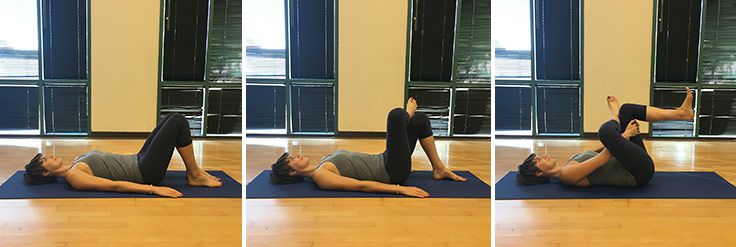
Start by lying on your back with the knees bent and feet flat on the floor.
Take your left leg and place your ankle across the right knee to make a figure-four shape. While maintaining this leg position, bring your right leg up to a right angle and grasp it with both hands behind the thigh, locking your fingers. Hold the position for 5-10 breaths before changing legs and repeating the exercise on the other side. You can repeat this exercise up to three times per leg.
Seated Pigeon
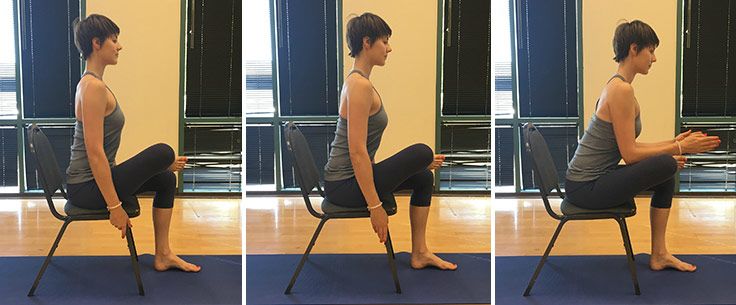
Start by sitting on a chair with the left foot flat on the floor and the right ankle on top of the left knee. Keeping a flat back, lean forward and allow your upper body to lean toward your thigh. To take a deeper stretch, press your forearms against your shins and lengthen the spine even more. Hold for 15 to 30 seconds and then switch sides. You can repeat this exercise up to three times per leg.
Knee to Opposite Shoulder

Start by lying on your back with your legs extended outward and your feet flexed upward. Clasp your hands around your knee and gently pull your right leg across your body toward your left shoulder. Hold it there for 30 seconds and then push your knee so your leg returns to its starting position. Repeat for a total of 3 repetitions before switching legs. (Note: only pull your knee as far as it will comfortably go. You should feel a comfortable stretch in your muscle, not pain.)
Spinal Twist
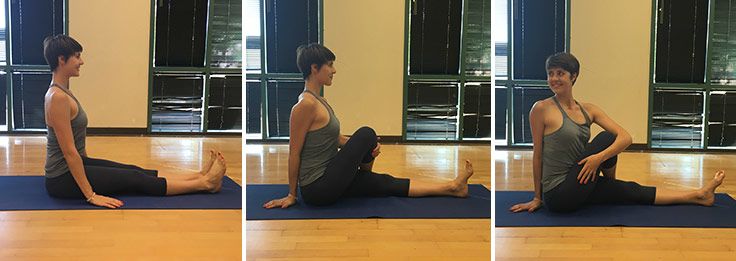
Start sitting on the ground with your legs extended straight out in front of you. Bend your right knee and place your foot flat on the floor on the outside of your opposite knee.
Wrap your left arm around the outside of your right knee to help you gently turn your body toward the right. Hold for 30 seconds before releasing. Repeat three times before switching sides (bending the left leg and turning the body to the left).
Standing Hamstring Stretch
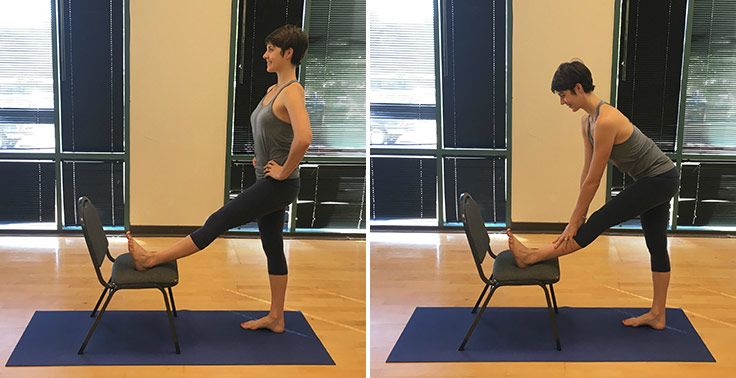
Place your right foot on an elevated surface at or below your hip level. Flex your foot so your toes and leg are straight. Hinge your spine forward slightly, leaning your chest towards your foot. Keep your back flat and don’t go so far that you feel pain. Hold for 30 seconds, and then repeat on the other side.
Lumbar Extensions
The following two exercises are generally good for individuals who may have a disc herniation causing sciatica pain.
Prone Press Up
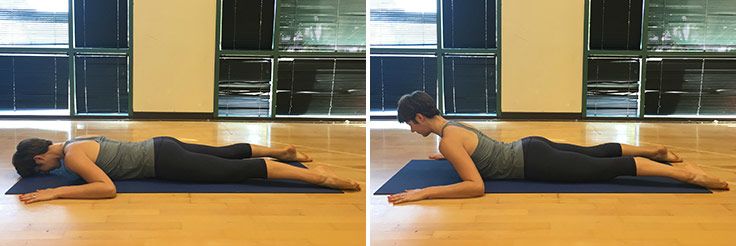
Begin by lying on your stomach with your elbows bent underneath you and palms flat on the surface. Keeping your elbows, hips and pelvis in contact with the surface, lift your head and chest off the mat by pressing down into your arms, keeping your back muscles relaxed. Only go as high as you are comfortable. Hold for five breaths before lowering, and repeat 10 times.
Standing Spinal Extension
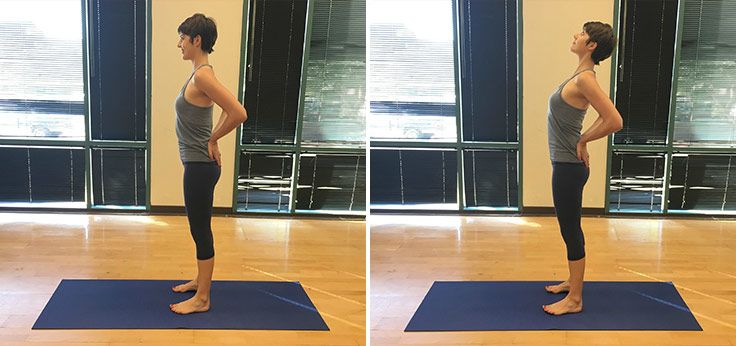
Begin by standing with the feet in parallel position and the hands resting on the back of the pelvis, fingers pointing down. Gently press into your hands as you lift your chest towards the ceiling and slightly extend the spine backwards. Hold for five breaths before releasing, and repeat five times.





 23 Decadent Dairy-Free Desserts
23 Decadent Dairy-Free Desserts
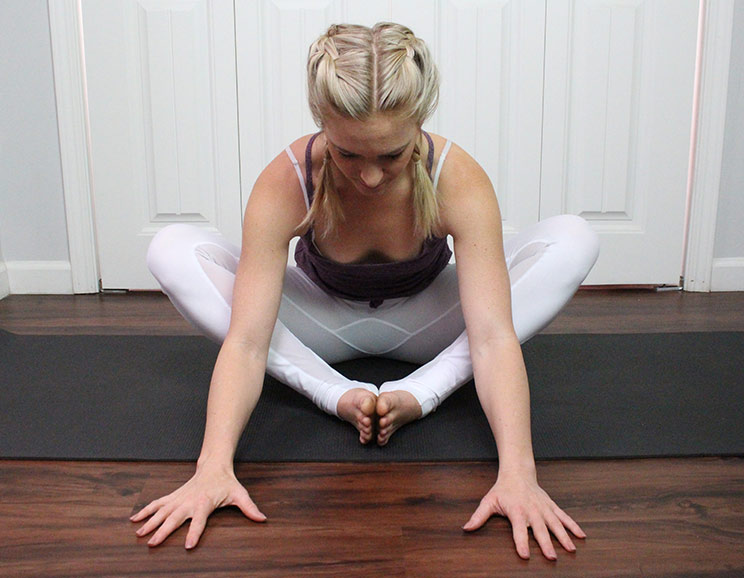
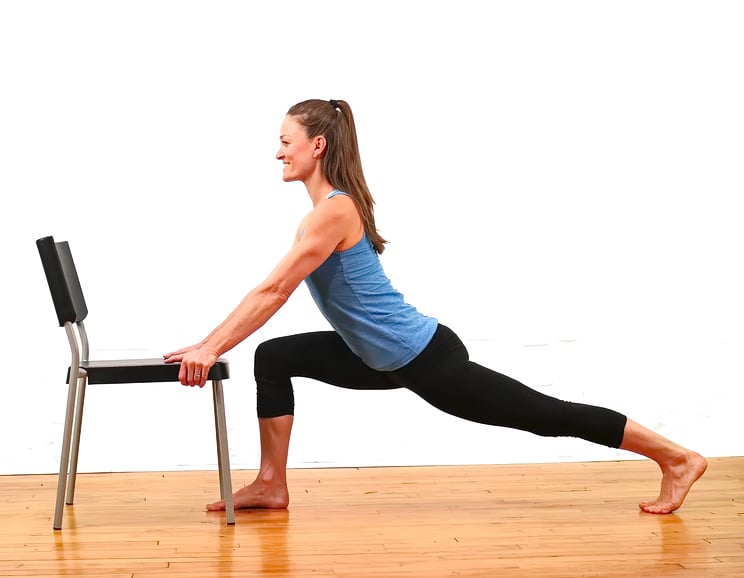

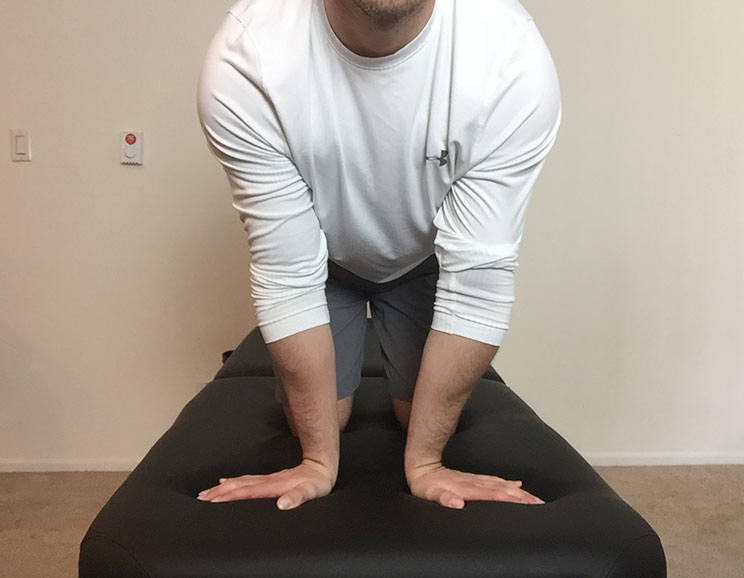


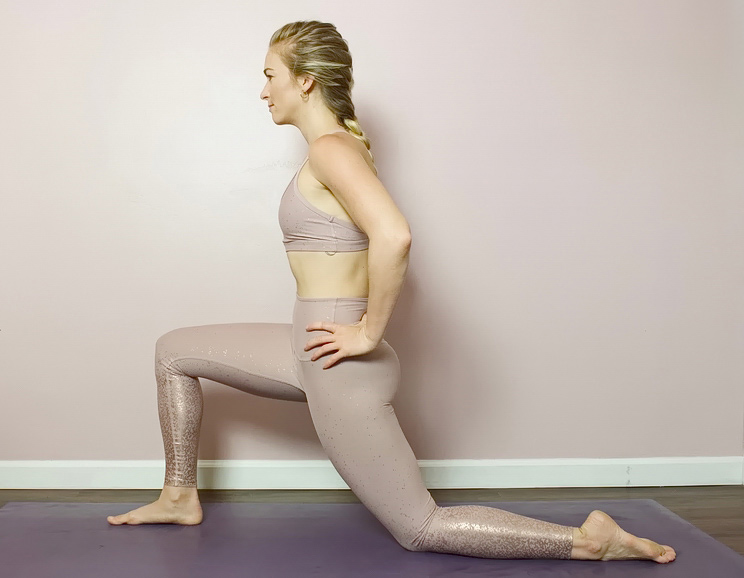
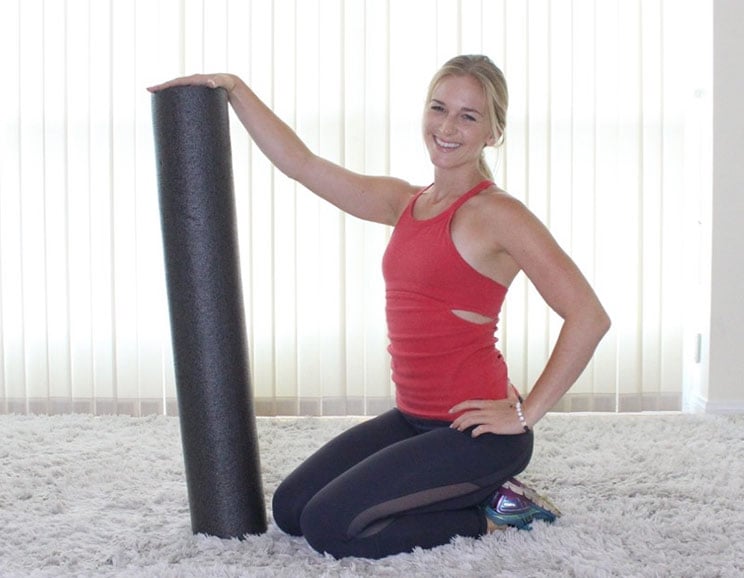
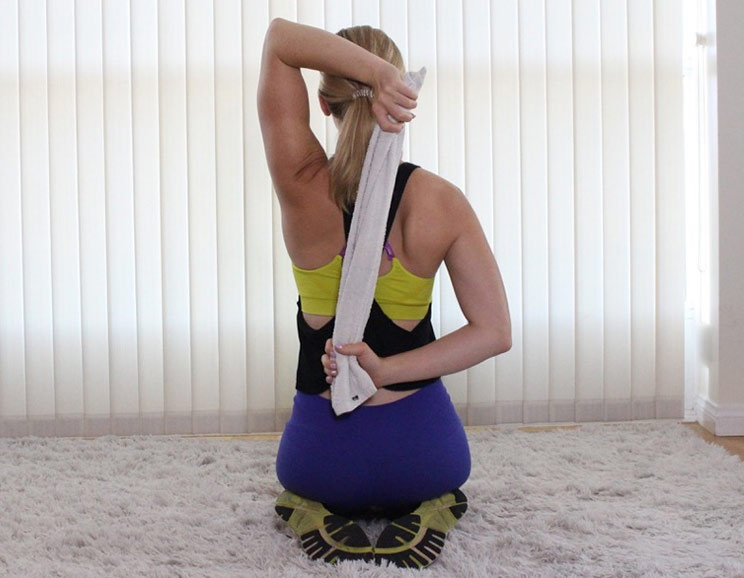
Show Comments